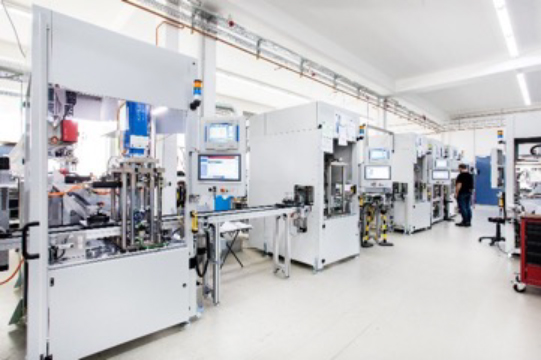
Posted to News on 28th Oct 2022, 10:15
Preserving the environment with sustainable joining processes

In manufacturing, there are increasing opportunities to improve the eco-footprint of products, with the joining processes that are used as part of the manufacturing process being a good example. We ask Alexander Müller, head of the joining systems business unit at Kistler, how choosing the right joining system can influence a product’s CO2-footprint.
Manufacturers across all sectors of industry are benefiting from the increasing automation of mass production and the corresponding gains in efficiency. At the same time, the sustainability of production methods is increasingly becoming a priority. With the calls for sustainable and future-ready production processes throughout the value chain growing louder, the ecological footprint of products is becoming one of the most important parameters in the industry.
Joining processes can be a good place to start in addressing environmental concerns. These processes take on a number of forms, like press-fitting, caulking, riveting, clinching, spring testing, embossing, crimping and clipping. Regardless of the specific process used, the right joining system allows optimisation potential to be tapped.
For example, when used in combination with integrated sensor systems, electromechanical joining systems – also known as servo presses – can enhance the controllability of processes. They join individual components precisely, and accurately record essential process data – typically the parameters force and displacement – in real-time. In addition, they analyse and document the data for seamless quality assurance.
Kistler’s Alexander Müller, an expert on joining processes, says: “In industries using automated manufacturing, efficient joining processes are becoming more and more important. Today’s manufacturers are often confronted with the challenge of producing a range of components, in varying sequences, on a single machine to maximise profitability. Even if the volumes needed can fluctuate, the quality expectations for every finished product remain constant.
“Consequently, manufacturers need machines that allow them to produce flexibly with consistent quality, and to reduce the total cost of ownership over the course of their service lives. In addition, sustainability is growing in importance: more and more manufacturers want to do their part for environmental protection.
Müller points out that manufacturers can achieve substantial savings by investing in servo presses with low energy consumption. But it’s important that they choose a system that is precisely dimensioned to their applications. With the right system, manufacturers can reduce their initial outlay and subsequent operating costs, while also cutting CO2 emissions.
But electromechanical joining systems contribute to sustainability in other ways, too. Compared to pneumatic and hydraulic joining systems, electromechanical systems offer significantly higher efficiency, precisely adjustable pressing force thanks to advanced control components, and excellent repeatability.
“Their high accuracy when it comes to monitoring force and displacement is made possible by integrated sensors,” Müller explains. “By gathering process data in real-time, analysing and documenting it, these sensors deliver seamless quality assurance. This means a high-quality standard in manufacturing. It can also reduce waste through optimised process control, saving additional resources in the process.
“In addition, choosing servo presses can cut maintenance and repair costs. For example, unlike pneumatic variants, electromechanical systems are not prone to pressurised air leaks. Unlike in hydraulic systems, there is no oil, that needs to be disposed of. As a rule, electromechanical systems need to be lubricated twice a year, in a quick and easy process.”
In an independent study, researchers at the University of Kassel assessed the savings potential of various technologies. In one experiment, they compared pneumatic and hydraulic solutions with the electromechanical alternative and measured the energy consumption for each technology. To do so, they used each of the three candidates to move a 100-kilogram weight for 6,000 hours. They found that, compared to hydraulics, the electromechanical variant used 77 percent less energy; compared to pneumatics, it was 90 percent less. “This not only massively reduces CO2 emissions; it also means lower operating costs,” says Müller.
He concludes: “By working with our customers as partners and sharing the support of our experts, we offer them optimal efficiency, contributing to more a sustainable production in the process. From sensors to completely tested systems, we can provide it all from a single source. From the first trial runs to maintenance agreements, we offer our customers competent support in every phase. In this regard, they can rely on our decades of experience in virtually every aspect of joining.
Want the latest machine building news straight to your inbox? Become a MachineBuilding member for free today >>
13 Murrell Green Business Park
London Road
RG27 9GR
UNITED KINGDOM
+44 (0)1256 741550

















